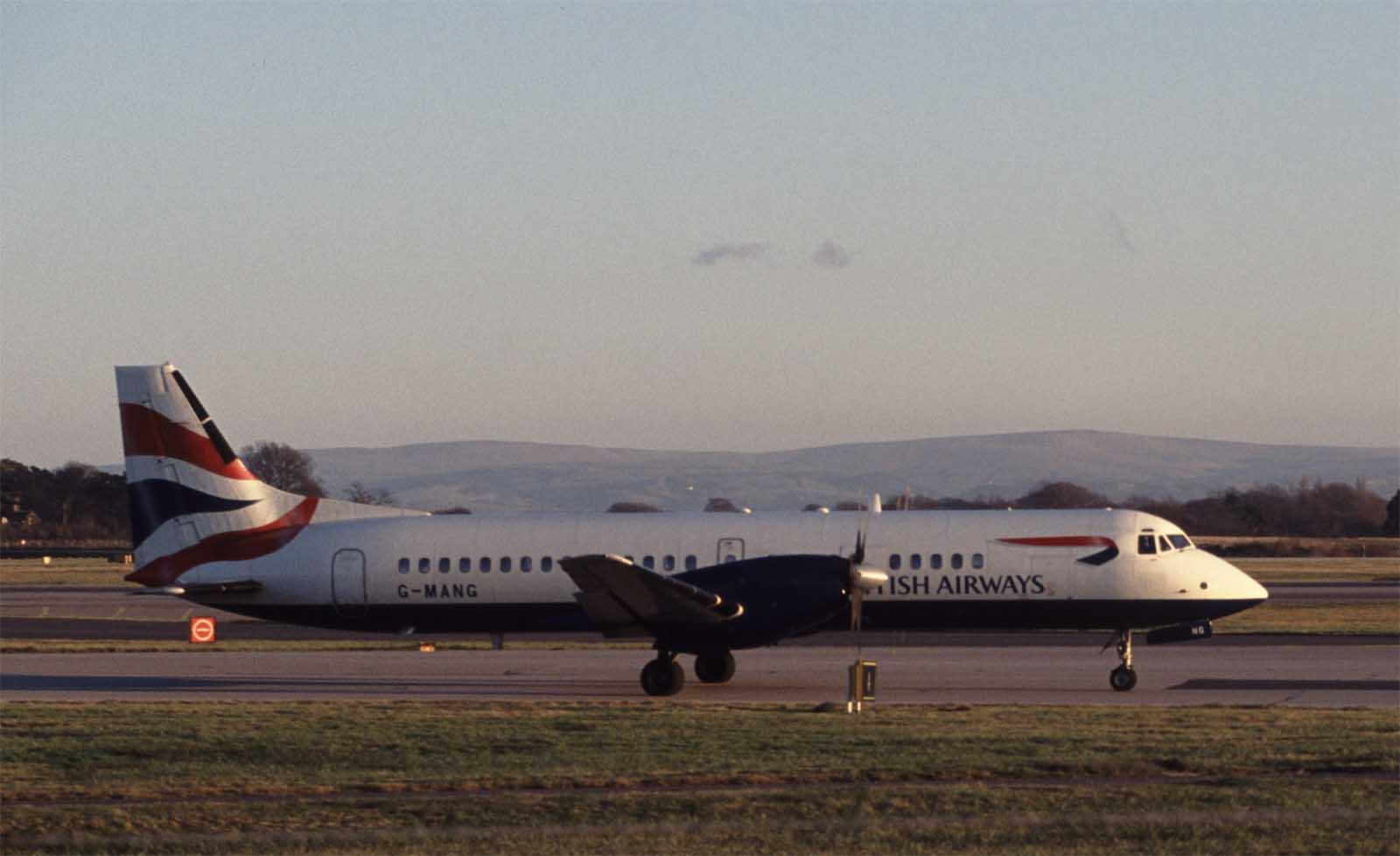- BAe ATP
infobox Aircraft
name = BAe ATP
type = Airliner
manufacturer =British Aerospace 
caption =
designer =
first flight = 1986
introduced = 1988
retired =
status =
primary user =
more users =
produced = 1988-1996
number built = 64
unit cost =
developed from =Hawker Siddeley HS 748
variants with their own articles =The BAe ATP was an
airliner designed as an evolution of theHawker Siddeley HS 748 . The fuel crisis and increasing worries aboutaircraft noise led business planners atBritish Aerospace to believe that there was a market for a short-range, low-noise, fuel-efficient turboprop aircraft. By the time it entered the market, the segment was already well represented by designs such as thede Havilland Canada Dash 8 andATR 42 , and production was ended after only 64 examples.Design and development
The airframe of the HS 748 was redesigned with a lengthened 26.01 m body and a 30.62 m wing span. Minor modifications were made to the nose and tail shapes, as well as smaller windows on a shorter pitch. The twin
Rolls-Royce Dart engines were replaced with Pratt & Whitney Canada PW126 fuel efficient engines. A custom designed, slow-turning, six-blade propeller was developed byHamilton Standard .The aircraft first flew in August 1986 and entered service with British Midland in 1988. The type has an advanced EFIS Flight Deck, and has a good short-field performance. In addition to these virtues, it is also very quiet upon take off.
In total 64 aircraft were assembled at BAe's Woodford and Prestwick facilities with the manufacture of the airframe and wings undertaken at Chadderton. Production ended at Prestwick in 1996. The plane can accommodate between 64 and 72 passengers depending on the seat configuration. The biggest operators of the aircraft are
British Airways CitiExpress andWest Air Sweden .In 2001 the ATP Freighter project allowed six ATPs to be converted in to cargo aircraft for West Air Sweden. Using a modification of the HS 748 freight door, the ATPF can carry 30% more cargo than its predecessor with a 10% increase in running costs. The ATPF made it first flight from West Air Sweden's facility in
Lidköping on 10 July 2002.In August 2006 a total of 33 ATP aircraft remain in airline service with
West Air Sweden (11),Asian Spirit (1),First Flight Couriers (1), Atlantic Airlines (3),Emerald Airways (5),Enimex (1),SATA Air Açores (5) andWest Air Luxembourg (5). [ "Flight International " , 3-9 October 2006]Variants
Several ATP variants were proposed and produced for civil and military use:;Jetstream 61 The British Aerospace Jetstream 61 was an improved derivative of the ATP. It featured an interior based on the Jetstream 41 with innovative cabin wall armrests and an increase in capacity from 64-70 seats. In addition the airframe incorporated more powerful PW127 engines and increased weights and range.
The first flight was completed by the original prototype ATP (serial number 2001) reregistered G-PLXI (LXI being the Roman numeral for 61) on the 10th May 1994. Four airframes were subsequently produced as Jetstream 61’s (2064-2067) before British Aerospace’s regional operations were merged with ATR on the 26th January 1995. With the already highly successful ATR72 now part of the same product range the Jetstream 61 was immediately cancelled with all four airframes being scrapped at Woodford.
The original ATP and Jetstream 61 prototype is currently in storage at Woodford awaiting a final move to the Jetstream Club at Liverpool
;Maritime ATP This was a variant for use in military naval operations, with a surveillance radar under the forward fuselage, nose-mounted FLIR and internal sonar buoys. A suite of special crew stations also featured, as did a choice of up to six weapon pylons under the wings and fuselage. The Maritime ATP was later known as the BAe P.132. None built.
; ATP-AEWThe AEW was a 1986 proposal for an Airborne Early Warning aircraft for Australia, with two EMI Skymaster radars in nose and tail radomes, similar in appearance to the Nimrod AEW.3. None built.
pecifications (ATP)
aircraft specifications
plane or copter?=plane
jet or prop?=propref= Jane's All the World's Aircraft, 1988-1989 cite book
last = Taylor
first = JWR (Editor)
title = Jane's All the World's Aircraft, 1988-1989
year = 1988
publisher = Jane's Information Group
language =
isbn =0 7106-0867-5 ]crew=Four (Two flight crew + two flight attendants)
capacity=64 passengers
length main= 26.00 m
length alt= 85 ft 4 in
span main= 30.63 m
span alt= 100 ft 6 in
height main= 7.14 m
height alt= 23 ft 5 in
area main= 78.3 m² cite web |url=http://www.aerospace-technology.com/projects/bae_atp/specs.html |title= BAE ATP Advanced Turboprop - Specifications |accessdate=2007-07-03 |format= |work= Aerospace Technology]
area alt= 843 ft²
airfoil=
empty weight main= 13,595 kg
empty weight alt= 29,970 lb
loaded weight main=
loaded weight alt=
useful load main=
useful load alt=
max takeoff weight main= 22,930 kg
max takeoff weight alt= 50,550 lb
more general=engine (prop)=Pratt & Whitney Canada PW126
type of prop=turboprop
number of props=2
power main= 1,978 kW
power alt= 2,653 hpmax speed main=
max speed alt=
cruise speed main= 496 km/h
cruise speed alt= 268 knots, 308mph
stall speed main=
stall speed alt=
never exceed speed main=
never exceed speed alt=
range main= 1,825 km
range alt= 985 NM, 1,134 mi
ceiling main= 7,600 m
ceiling alt= 25,000 ft
climb rate main=
climb rate alt=
loading main=
loading alt=
thrust/weight=
power/mass main=
power/mass alt=
more performance=armament=
avionics=
ee also
aircontent
related=
*Hawker Siddeley HS 748
*Hawker Siddeley Andover similar aircraft=
*Saab 2000
*ATR 72
*de Havilland Canada Dash 8
*Handley Page Herald
*NAMC YS-11 sequence=
lists=
*List of civil aircraft
see also=References
External links
* [http://www.baeam.com/gfx/uploads/BAe_ATP_General_data_brochure.pdf BAe ATP Brochure]
Wikimedia Foundation. 2010.
